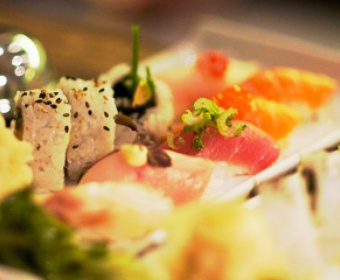
Food, the basics
“Food” is simply the substances we and all other living, eating creatures need to consume in order to function and live. The molecules we consume are used as fuel and as building blocks to put together, sustain and power all the parts that make up our bodies. Most of the substances that we need are found in other living organisms, in animals as well as plants. They are what our body is looking for when we eat food.
Food is water
Cells – the building blocks of all living things – resemble very tiny water bags. That’s why almost all fresh food generally consists of water, even when cooked. The reason why you experience food as “juicy” is because it contains water. Water is a good indicator of temperature, as it boils and bubbles and steams at a 100°C at sea level. Water boils at lower temperatures at higher altitudes.
The human body consists of about 60 percent water. Water is essential for practically all the chemical processes that continuously take place inside our bodies.
Food is protein
Proteins are the main building blocks in meat, fish, egg and dairy products. Proteins are also found in smaller quantities in fruit and vegetables. Nuts, leguminous plants and soya contain the most protein in the plant kingdom. We need proteins for the growth and maintenance of the muscles and tissue in our body as well as for the production of hormones, enzymes, antibodies and controlling body fluids.
Proteins, in turn, consist of amino acids. Because our body cannot produce the most important amino acids on its own, it needs to consume foods rich in protein.
Food is carbohydrates
Carbohydrates are mainly a source of energy. Our intestines reduce them to their tiniest constituents and the bloodstream carries them to our cells where they are burnt and become water and carbon dioxide that we exhale. Carbohydrates are not as changeable and vulnerable to heat as proteins, but, as we all know, overcooked pasta, potatoes or green are not a hit on your plate. Carbohydrates are usually divided into two types:
- In fast carbohydrates, the molecules occur individually or in small clusters, making it easy for the intestines to break down and digest them. All forms of sugar contain fast carbohydrates.
- In slow carbohydrates, the molecules occur in more complex clusters and longer chains and take more time to digest as a result. They are mainly found in the starch in potatoes, leguminous plants, wheat, rice, pasta, etc. (The problem with carbohydrates in white flour and polished rice, for example, is that they are so heavily processed and refined that they could be considered fast carbohydrates.)
Plant fibers, cellulose, also consist of carbohydrates. But the molecular structures are so large and complex that the human stomach is unable to break them down into molecules small enough to be absorbed into the bloodstream.
Food is fat
Fats are extracted from both animal and plant cells and can be solid, semi-solid or liquid oils. Fat occurs in most cells and has twice the ability to store energy compared to proteins and carbohydrates. Fatty layers in animals also serve as insulation.
Food that is too fatty can have negative consequences on your heart and your blood lipids, but fat generates energy and is the only way the body can absorb fat-soluble vitamins and antioxidants. Things you should know about fat:
- Saturated fat melts at a higher temperature than unsaturated fat. Fats that are more or less solid at room temperature are usually saturated and are mostly found in meat and fatty dairy products.
- Mono-unsaturated fat is usually liquid in room temperature and found in olive oil and rapeseed oil.
- Polyunsaturated fat becomes rancid faster than other fats due to its unstable chemical composition. Avocado, walnuts and oily fish are sources of polyunsaturated fat.-
- Trans fat is hydrogenated (processed) fat, which is used to produce food with long shelf life.
Food is vitamins and minerals
Vitamins and minerals add no calories and cannot be detected with the eye, yet they are vital nutrients that must be included in the molecule cocktail we call food. We ingest them through a varied diet and fresh, high quality raw materials, from both the plant and animal kingdom. There’s some truth in the belief that a colorful diet is a varied and nutritious diet.
Molecules are food
By building knowledge about food and how cooking affects all the various building blocks that make up food, you will discover many ways in which to improve your techniques and processes in the kitchen. For example, water can be alkaline, neutral or acidic and this can affect your cooking on a molecular level – and therefore also on all other levels.
Proteins are among the most sensitive molecules when you cook. Heat makes the protein coagulate, which is what happens when you cook meat, fish and egg. Carbohydrates can degrade into threads, which make your sauces thicken, and fat makes your food more tasty.
The smallest building blocks in food – molecules – are what it's all about.


